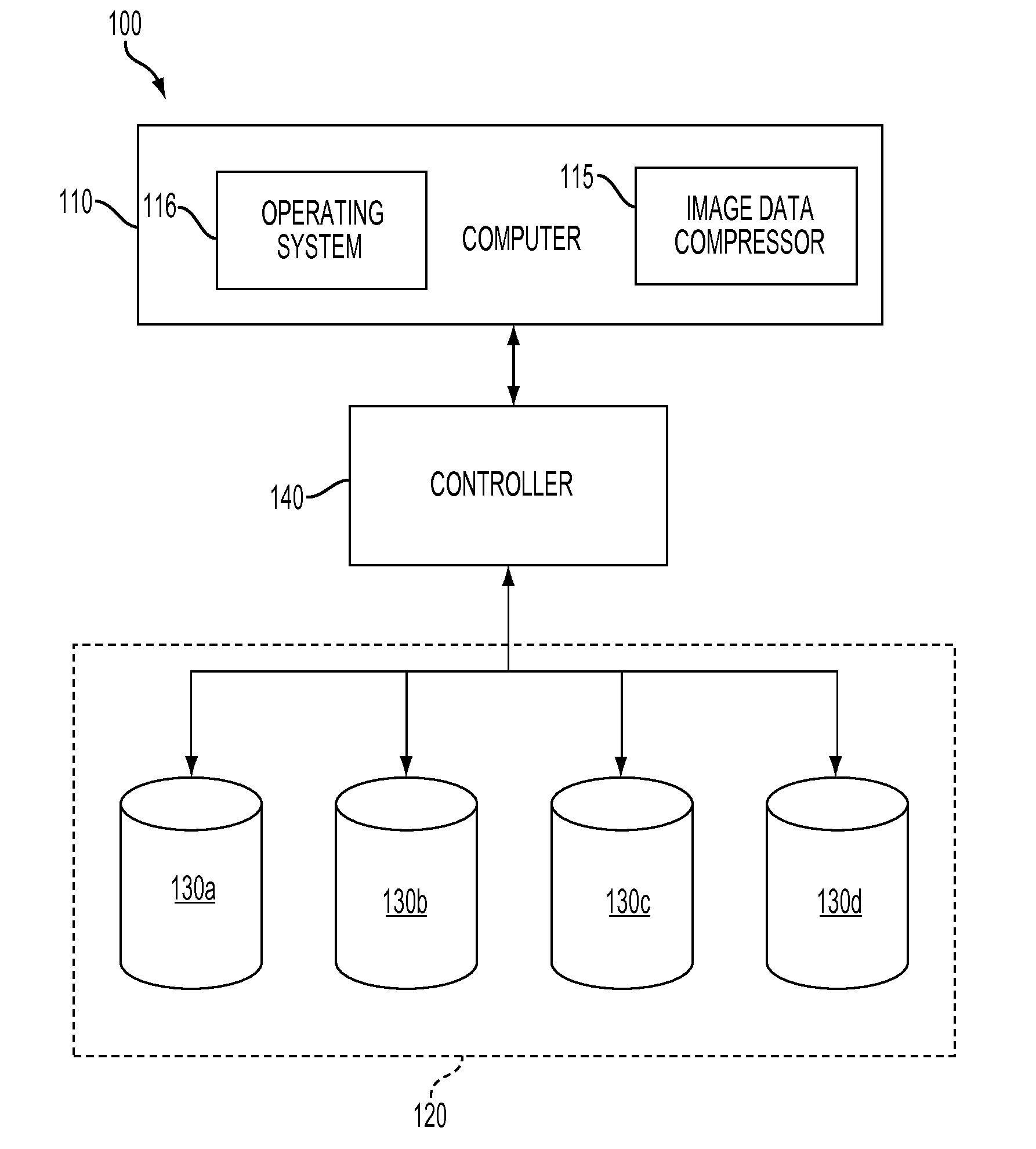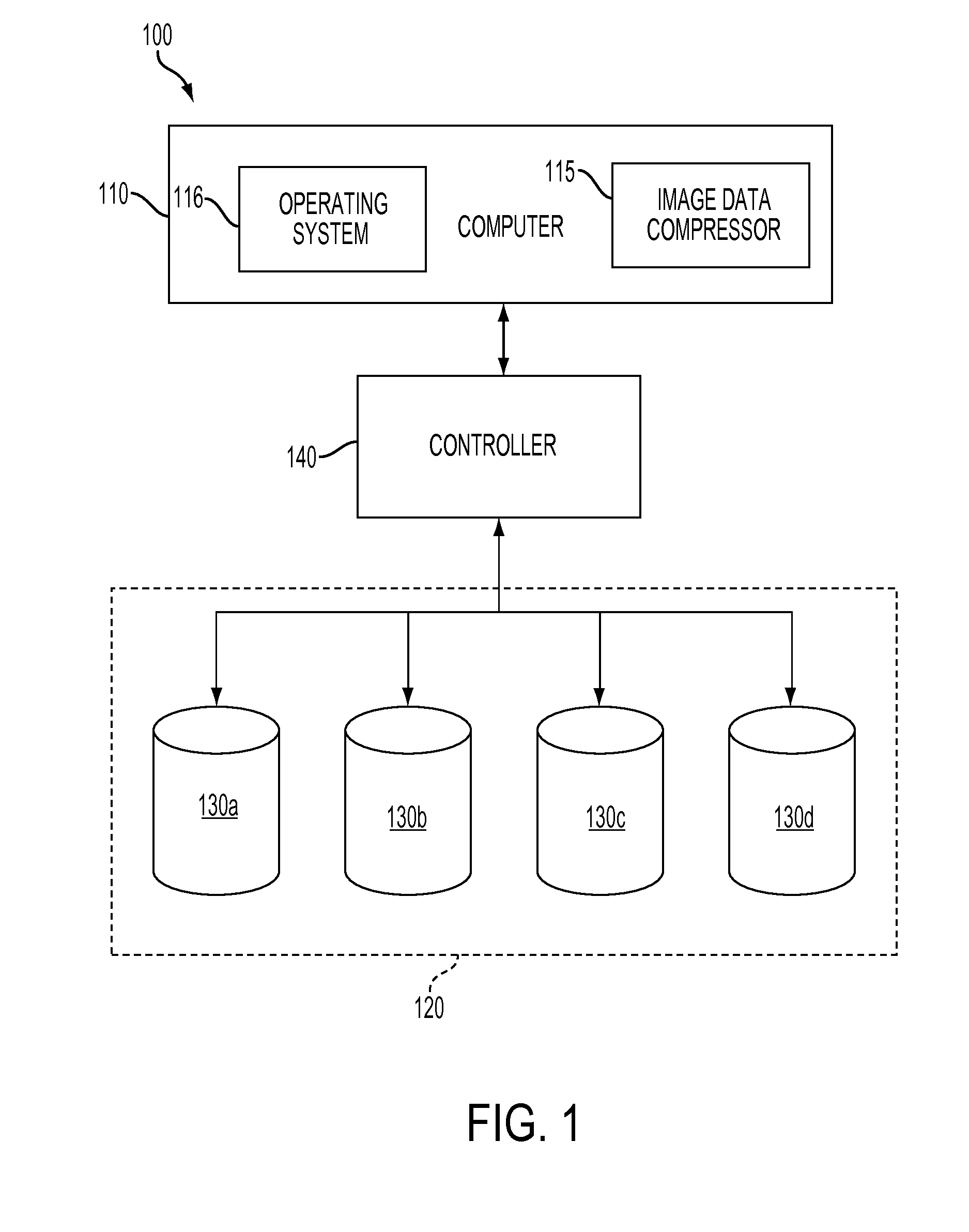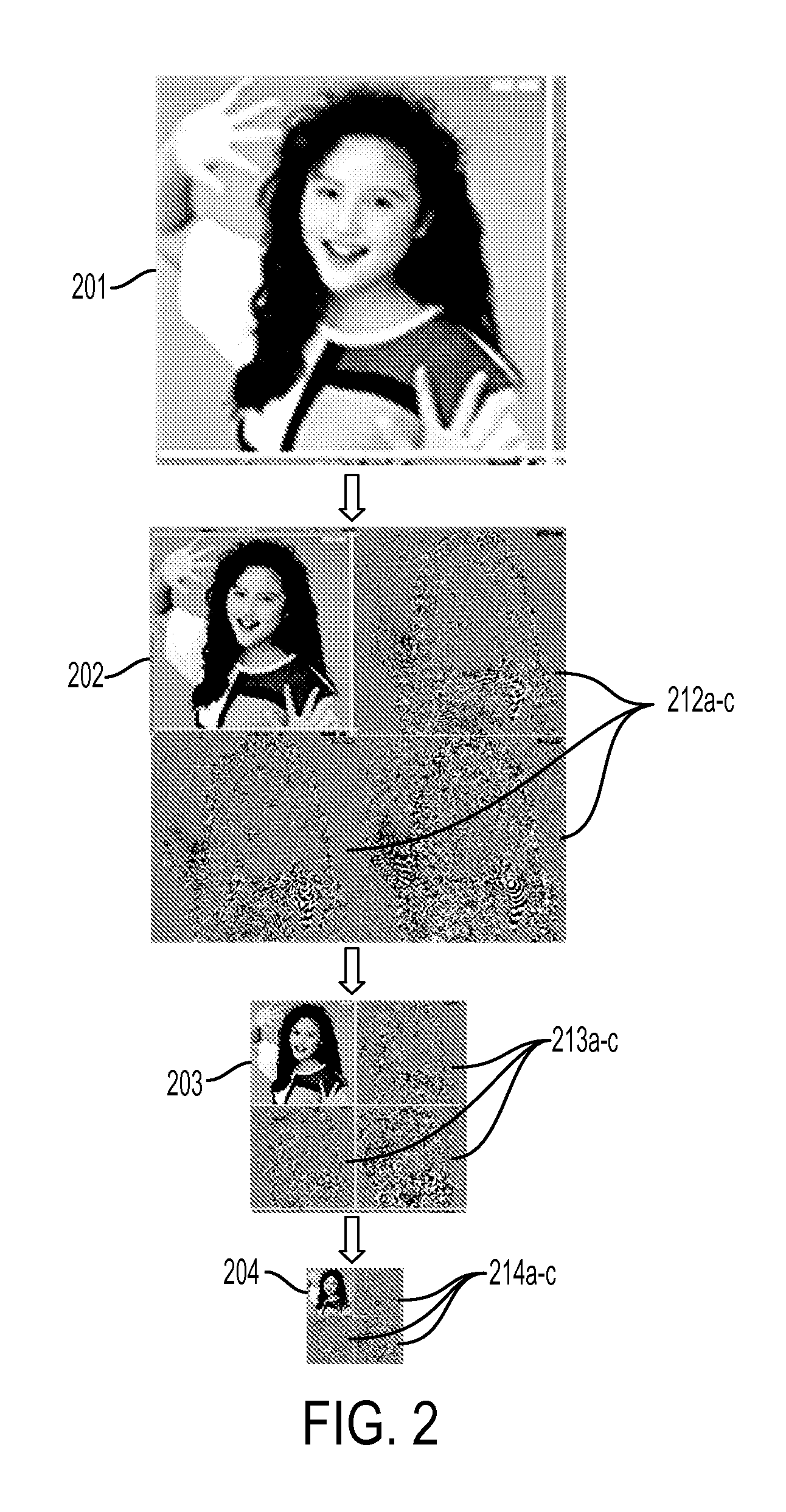Disk sector allocation for high performance access to images
- Summary
- Abstract
- Description
- Claims
- Application Information
AI Technical Summary
Benefits of technology
Problems solved by technology
Method used
Image
Examples
Embodiment Construction
[0018]As mentioned above, modern image data storage repositories use disk drive arrays, such as redundant arrays of independent disks (RAID), to store original image data for millions of different images and also multiple resolution levels of compressed image data for each image with each level representing a progressively lower resolution copy of the image. Such repositories allow users to browse through “thumbnail” images, having the lowest resolution level, and to select a specific image in order to view the image at a higher resolution level and / or to zoom-in on a portion of the specific image. Traditionally, storage and retrieval of image data on the disk drives in RAIDs is accomplish using caching and de-segmentation techniques. Unfortunately, increases in the number of images being stored as well as increases in the number of resolution levels of image data for each image being stored have resulted in a corresponding increase in the time required for image data retrieval (i.e...
PUM
 Login to View More
Login to View More Abstract
Description
Claims
Application Information
 Login to View More
Login to View More - R&D
- Intellectual Property
- Life Sciences
- Materials
- Tech Scout
- Unparalleled Data Quality
- Higher Quality Content
- 60% Fewer Hallucinations
Browse by: Latest US Patents, China's latest patents, Technical Efficacy Thesaurus, Application Domain, Technology Topic, Popular Technical Reports.
© 2025 PatSnap. All rights reserved.Legal|Privacy policy|Modern Slavery Act Transparency Statement|Sitemap|About US| Contact US: help@patsnap.com



